Tel Aviv: History in the Making


Traveling With History :
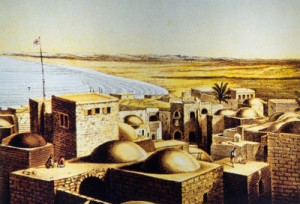

Tel Aviv: Facing the Future With a Different Take on the Past
© pictures and text, Allan Seiden, 2012
It was on a sunny day in 1909, with Palestine a province of the Ottoman Empire, that a group of Jewish residents of the ancient port city of Jaffa, feeling at risk after anti-Jewish riots, bought twelve acres of land on the sand dunes north of Jaffa. Drawing lots for building sites, they established a community that several years later would be called Tel
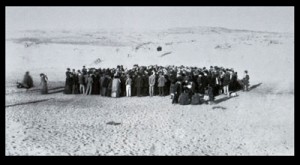

Aviv, tel Hebrew for a manmade hill and aviv for spring, the season of regeneration, symbolic of the return of the Jews to their ancient homeland.
Those pursuing this goal were Zionists. Taking their name from the biblical reference to Israel, they came in many variations, some religious, some secular, some labor-oriented, drawn from the intelligentsia, and the middle and working classes.
The first Zionist communities were begun by religious Jews in the 1880s and 1890s. They joined existing Jewish communities, some dating back to the middle ages.
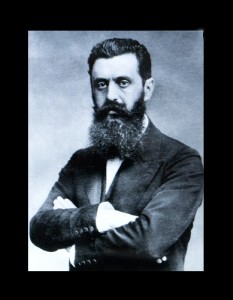

Their settlements were largely communal, designed for self-reliance and as an expression of spiritual truth. Political Zionism added a nationalist objective in restoring the Jews to their ancestral homeland. That was the message at the First Zionist Congress when it convened in Basel, Switzerland in 1897. Under the leadership of Theodore Herzl, a respected Viennese journalist, the Congress set its sights on restoring the Jews to what was then an outlying province of the Ottoman Empire. Ottoman Palestine was a sparsely populated land that, under Ottoman rule, had been reduced to poverty and environmental destruction, hillsides denuded of their forests, the desert encroaching on the land. Other places as far afield as South America and West Africa had been proposed as a place for a Jewish homeland. In the 1920s, the Soviets had even established a vast Jewish Autonomous Region in the wilds of north-central Asia. Few Jews had gone to this frontier. If there was to be a Jewish homeland, Israel had history on its side. There are reasons that synagogues have always faced Jerusalem and why ancient prayers make Zion a place of yearning in both real and spiritual terms.
The Zionists who followed in the first decades of the 20th century were largely secular in their Jewish orientation and politically socialist in their thinking. Many were middle class and well educated, but there were also working class Zionists, members of popular progressive movements often allied with organized labor. Sensing the gathering storm Zionists of all backgrounds shared a common belief that history repeatedly showed Jewish vulnerability in both the lands of Christendom and Islam, with death, forced conversion, and exile often the only options. In the 19th century a new word was added to anti-Semitic lexicon: pogrom.
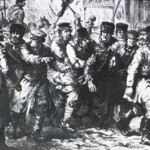

These state-sanctioned murder rampages against Jews swept eastern Europe into the early 20th century, with the death toll in the tens of thousands.


Then, in 1894 the Dreyfus Affair revealed a strong current of anti-Semitism, even in egalitarian France. By the 1930s, Germany’s solution to the “Jewish problem” made it increasingly obvious that Europe was a dangerous place to be Jewish. Sadly, the early Zionists had accurately read the signs of pending disaster. Hundreds of thousands fled overseas, with thousands heading to British-administered Palestine.
Great Britain had been placed in charge of Palestine in 1920 by authority of the League of Nations, predecessor world body to the United Nations. Britain proved intermittently accommodating to the influx of Jews, perhaps in appreciati0n of the support of Jewish volunteer forces in overthrowing the Ottoman Turks in 1917, during World War I. That same year, the Balfour Declaration, issued by British Foreign Secretary Lord Balfour, stated His Majesty’s Government’s support of a division of Palestine between Arabs and Jews. Balfour first declared the government’s policy in a letter to Lord Rothschild relative to Zionist hopes. That policy would later be incorporated into the Sevres Peace Treaty ending the Allied war against Ottoman Turkey and into the terms establishing the British Mandate for Palestine.
Foreign Office
2nd November 1917
2nd November 1917
Dear Lord Rothschild: I have much pleasure in conveying to you on behalf of His Majesty’s Government the following declaration of our sympathy with Jewish Zionist aspirations which has been submitted to, and approved by, the Cabinet. His Majesty’s Government view with favour the establishment in Palestine of a National Home for the Jewish people, and will use their best endeavours to facilitate the achievement of this object, it being clearly understood that nothing shall be done which may prejudice the civil and religious rights of existing non-Jewish communities in Palestine, or the rights and political status enjoyed by Jews in any other country. I should be grateful if you would bring this declaration to the knowledge of the Zionist Federation.
Yours sincerely,
Arthur James Balfour
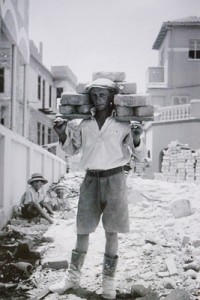

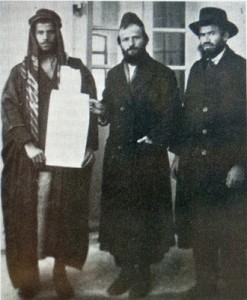

This policy was vigorously protested by the PalestinianArabs, who did not look kindly on Zionist aspirations or recognize British authority and were not the least bit happy replacing the Ottoman Turks with Christian Europeans as overlords. Anger led to intermittent Arab violence against Jews in the 1920s, with the
situati0n worsening in the 1930s as Jewish immigration increased and the Jewish population of Palestine grew to nearly 500,000. These new new settlers were put on land bought from Palestinian Arab landowners, resulting in tenant farmers being evicted from lands they had worked. Palestinian Arab opposition
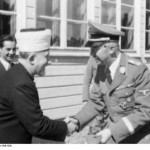

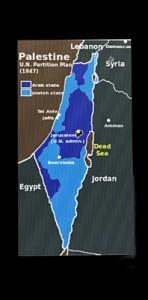

hardened as did Jewish resistance, with para-military groups operating to protect Jewish neighborhoods and villages and fighting the British who, surrendering to Arab pressure, began to intercept Jewish
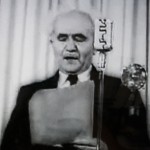
immigrants even as escape from Europe became a matter of life and death. With that in mind, Jewish para-military groups formed, attacking the British and hostile Arabs. In time, as Arab opposition hardened and massacres of Jew occurred, these groups went on the offensive.
After independence was declared in 1948, these once independent groups provided  the core for the Israel Defense Forces (IDF), which were quickly challenged by the armies of Egypt, Syria and Jordan. The Israeli state declared by David Ben-Gurion on May 14, 1948 was based on a plan approved by the United Nations the previous year that had been rejected by the U.N.’s
the core for the Israel Defense Forces (IDF), which were quickly challenged by the armies of Egypt, Syria and Jordan. The Israeli state declared by David Ben-Gurion on May 14, 1948 was based on a plan approved by the United Nations the previous year that had been rejected by the U.N.’s
 the core for the Israel Defense Forces (IDF), which were quickly challenged by the armies of Egypt, Syria and Jordan. The Israeli state declared by David Ben-Gurion on May 14, 1948 was based on a plan approved by the United Nations the previous year that had been rejected by the U.N.’s
the core for the Israel Defense Forces (IDF), which were quickly challenged by the armies of Egypt, Syria and Jordan. The Israeli state declared by David Ben-Gurion on May 14, 1948 was based on a plan approved by the United Nations the previous year that had been rejected by the U.N.’s
Arab states. Within days. Israel was in a war of survival, one of many its fought in the dcades that have followed.
As a matter of perspective, tribal bad blood between Arabs and Jews goes back to biblical times, when these kindred Semitic peoples first became enemies as children of Abraham. As the Bible tells it, when Abraham’s wife Sarah found herself unable to conceive a child with she offered her Egyptian slave, Hagar, as a surrogate, and Ismael is born
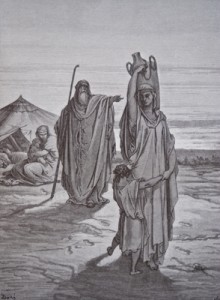

she offers her Egyptian slave, Hagar as a surrogate and Ishmael is born. Then Sarah, well beyond child-bearing years, miraculously conceived Isaac. Protective of Isaac when he is mocked by Ismael, Sarah has Hagar and Ismael sent away. Near death in the desert, they are saved by godly intervention. Half-brothers Isaac and Ishmael would become the progenbitors of the Jews and the Arabs.
Mohammed had dealings with Jews living in Arabia, and developed a certain antipathy when they refused to acknowledge him as a prophet, siding with Mohammed’s enemies when war engulfed Arabia. So it was that the Jews would receive mixed reviews in the Koran, considered a benighted people for their failure to accept Islam as the fulfillment of Jewish and Christian theologies. So it is that long memories lead to nearly impossible solutions in the Middle East.
*******
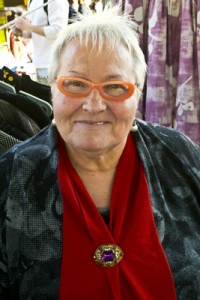

From the beginning, Tel Aviv was to be a Jewish city, but that didn’t mean a second Jerusalem. The secular Zionists accepted the humanist and moral realities at the foundation of Judaism, but rejected the deity and the strict and formalistic detail of rabbinic Judaism. The secular Zionists sought to create a Jewish nation, an ingathering of exiles providing a safe haven for Jews who
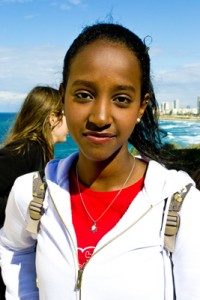

were marginalized, mistreated, expelled, murdered or forced to convert in both Christian Europe and in the Muslim lands of north Africa and west Asia. Institutionalized persecution was the order of the day, although there were exceptions…places like medieval Muslim Spain and the Catholic Italian states in the early Middle Ages, where Jews flourished. The overall picture was far less enlightened or ecumenical.These were Jews who rejected this past as a path to the future, who rejected victimization as the Jews ultimate fate. They would build a city that was progressive in its plan, modern in its architectural outlook, and philosophically liberal. As the Jewish population grew, so did Tel Aviv, which came to be called the White City, not only in reference to the quarried stone used for its Bauhaus buildings, but for the enlightened ideal for which it stood.
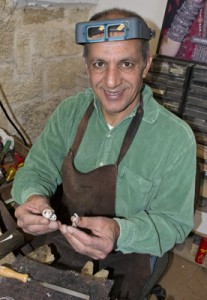

The municipality of Tel Aviv/Yafo lies at the center of a far larger metropolitan area, home to 3.3-million people, 92% of whom are Jewish., compared to Jerusalem’s 68%. That doesn’t mean homogeneous, however, with European, Asian and African Jews, all part of the eclectic mixture that adds a cosmopolitan flavor to the city.
While the Palestinian mainstream
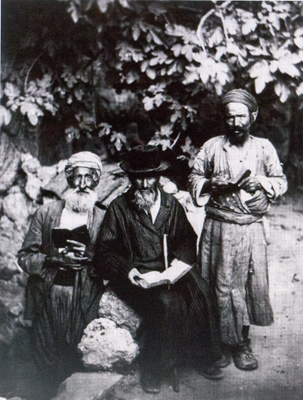

was largely Muslim Arab, even before the Zionist return to Israel there were Jewish communities were to be found in Safed, Tiberius, Hebron, Jerusalem, Acre, and Jaffa. Established communities were sometimes supplemented by those seeking to reconnect to their ancestral homeland.
Since founding in 1948, Tel Aviv has grown to become the country’s commercial, financial, cultural, and creative capital, and a Mediterranean resort that comes to life during the hedonistic summer months. My winter visit saw only brave surfers in wetsuits braving temperatures in the 50s. As Israel’s creative hub, Tel Aviv is home to world-class cultural institution like the Israel Philharmonic, Batsheva Dance Troupe, Habonim Theater, and the Israel Museum. Galleries and shops in the vicinity of Rothschild Blvd. reveal the hip, sometimes-iconoclastic creativity that defines Tel Aviv.
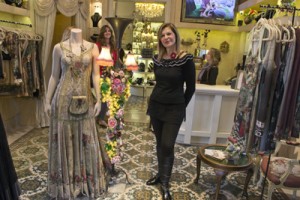

that defines Tel Aviv.
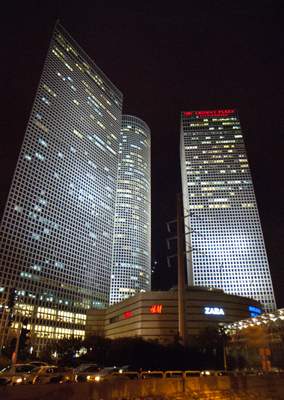

Innovation also comes in Tel Aviv’s role as the nation’s financial capital, funding the innovative companies that have seen Israel emerge at the highest technological levels in medicine, agriculture, and computer science.
While Jerusalem remained the symbolic heart of Israel reborn, it was in Tel Aviv that David Ben Gurion, Israel’s iconic founding father, declared the founding of the State of Israel on May 14,1948 from Independence Hall (then the Dizzengoff mansion, now a museum) on Rothschild Blvd, one of the city’s nicest commercial promenades.
Tel Aviv proved the entrepreneurial city that would provide Israel with a high-tech place in the world economy. The boom is evident in the dozens of highrise buildings that are now an integral part of the cityscape, and a fly-over as you arrive or leave, reveals the lateral extent of the city’s 25-mile-long stretch of the Mediterranean coast, spreading inland for miles before surrendering to lushly green farmland and pasture.
TRAVELING WITH HISTORY
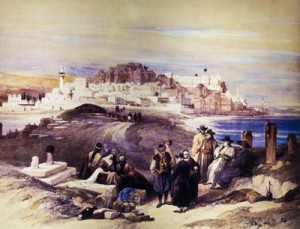

*** Jaffa
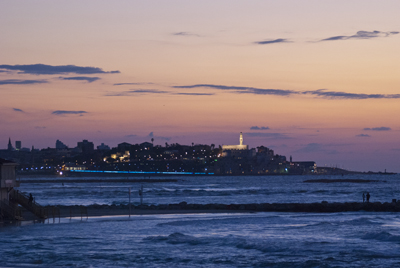

Jaffa a part of the Tel Aviv-Yafo municipality, offers Tel Aviv’s most ethnically mixed neighborhood, a mix of Arabs and Jews that has the look of the Middle East. Whereas Tel Aviv is new, Jaffa’s history as a Mediterranean trading port dates back to the times of pharonic Egypt, imperial Rome, Muslim and Crusader invaders. From 1614 through 1917, when the Ottoman Turks governed Palestine, Jaffa’s importance as a port declined, only to be overwhelmed by the emergence of Tel Aviv. The Jaffa Museum, on the site of an archeological, provides a multi-media account of that history.
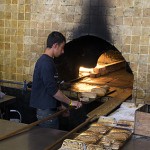

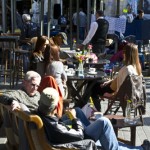

Today’s Jaffa is an eclectic blend, part flea market, part artsy, with a casual mix of galleries, cafes and restaurants in a cityscape of narrow streets and winding
alleys, where a timeless Arab bakery is neighbor to a gallery featuring Yemenite silver jewelry or a coffee shop hosting Tel Aviv “expats” enjoying the fascinating mix of people that add diverse authenticity to the passing scene.
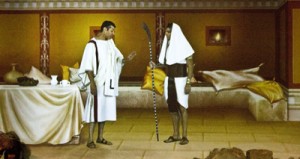

From Jaffa’s hilltop lookout, highrise Tel Aviv spreads north in a beachside assault of hotels and apartments. The tallest highrises are in the commercial part of the city, inland by a mile or two, with the Azrieli Center towers topping out at 614- feet.
*** Bauhaus Tel Aviv/ Neve Tzedek
Much remains of early Tel Aviv: Enough, in fact, to gain the city recognition as a World Heritage Site, admired for the world’s greatest concentration of Bauhaus architecture,
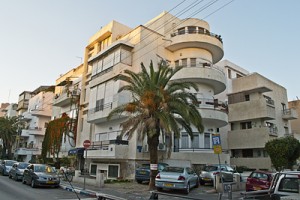

the decidedly simple, minimalist style spawned in the 1920s and ‘30s in modernist contrast to the elaborate detail and soft-curving flourishes of Art Deco and Art Nouveau design. Suited to the setting and the climate, it was familiar to those ex-Europeans then building homes and businesses in Tel Aviv. While some homes lie in the shadow of sky-scrapping highrises, much of Bauhaus Tel Aviv survives along Rothschild Blvd., Montefiore, Ahad, Haam, and Melchett streets. Using stylistically geometric flow rather than ornamentation, the look defines what was progressive and modern in the 1920s and 1930s when Tel Aviv began to grow. Today, shops, galleries, restaurants, and clubs (straight and gay) are part of the Bauhaus district scene.The eclectic style that competed with Bauhaus can be best seen in Neve Tzedek.
** Independence Hall
Exhibits detail the dramatic events leading to and following Israel’s declaration of independence on May 14, 1948. Ties in with a Bauhaus district visit.
*** Tel Aviv Museum of Art
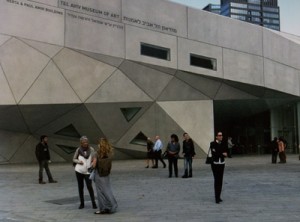

Permanent collections of Israeli art and a plentiful schedule of special exhibits make a visit worth considering.
*** Beth Hatfutsoth
The Museum of the Diaspora tells the story of far-flung Jewish communities around the world, supplemented by historic and contemporary exhibits.
*** Azrieli Observatory
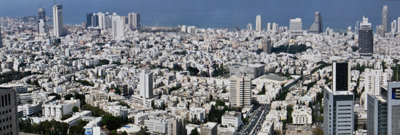

Unobstructed panoramas from one Israel’s tallest buildings, with audio guide to the city below included with admission.
*** Akko
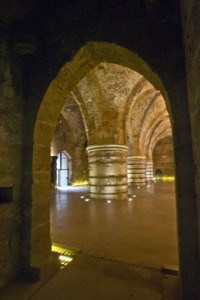

Make a day trip to Akko, a 75-minute train ride north of Tel Aviv. As the best-preserved Crusader port, it is a UNESCO World Heritage Site. The remains of its medieval Crusader past were inadvertently preserved when they were filled in and built over after the Muslim reconquest in the late 12th century. A medieval synagogue, Turkish bath, a large caravansary, and a winding maze of streets and alleyways, make it a great place to wander , with hand-made jewelry a specialty of Akko shops, with a number of restaurants to choose from.
*** Caesarea
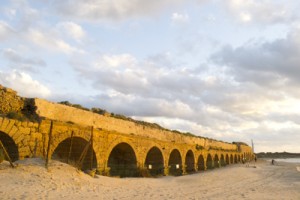

Built by King Herod to curry favor with his Roman overlords, it was a Roman city that became headquarters for the Roman administration after the defeat of the Jews in 70. The ruins of the beachside city, about 45 freeway minutes north of Tel Aviv, include the aqueduct, port, and medieval city walls, with a restaurant on site.
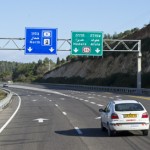

USEFUL CONTACTS
Israel Ministry of Tourism www.goisrael.com


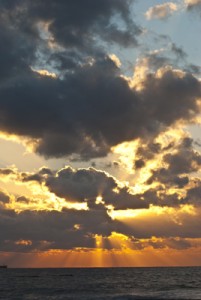

Israeli Museums: www.wikipedia.com
Tel Aviv: www.telaviv.com
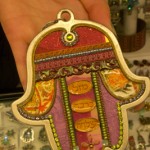

NEXT
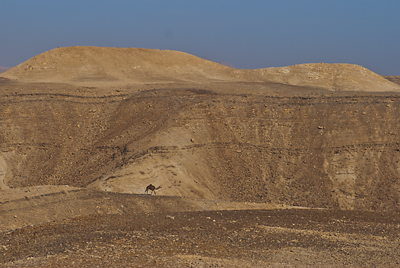

Traveling With History The Negev: The Desert & the Deep Blue Sea


No comments:
Post a Comment